Glofish is undoubtedly one of the most popular aquarium fish breeds in the market today. These tiny, neon-colored fish have taken over the world of fishkeeping, capturing the hearts of many with their vibrant hues and unique appearance.
However, it is not widely known that there are male and female variants of the Glofish and that they exhibit distinct differences in behavior and physical characteristics. Here, we will delve deeper into the world of these colorful creatures, exploring the differences between male and female Glofish.
Understanding the differences between male and female Glofish is crucial for any fishkeeper who intends to breed or maintain a thriving community of these fascinating creatures. Male vs female Glofish can be differentiated based on physical characteristics, behavioral patterns, and reproductive organs.
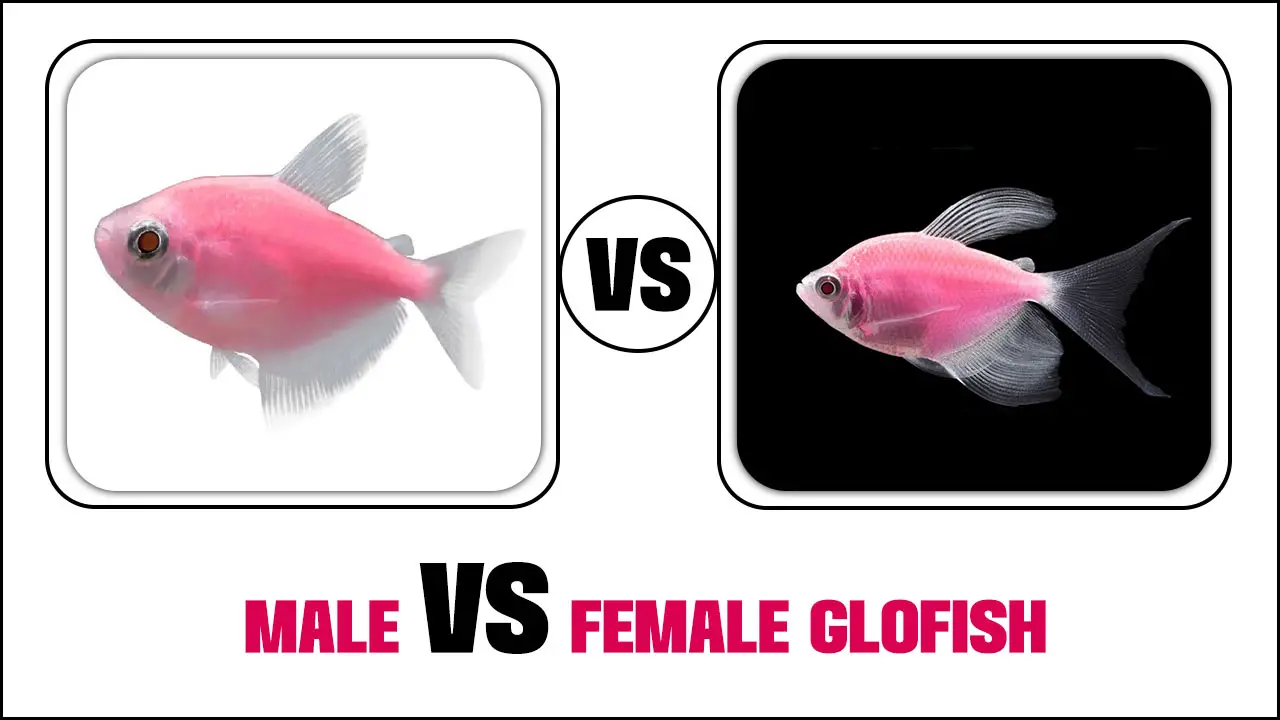
Understanding The Differences Between Male Vs Female Glofish
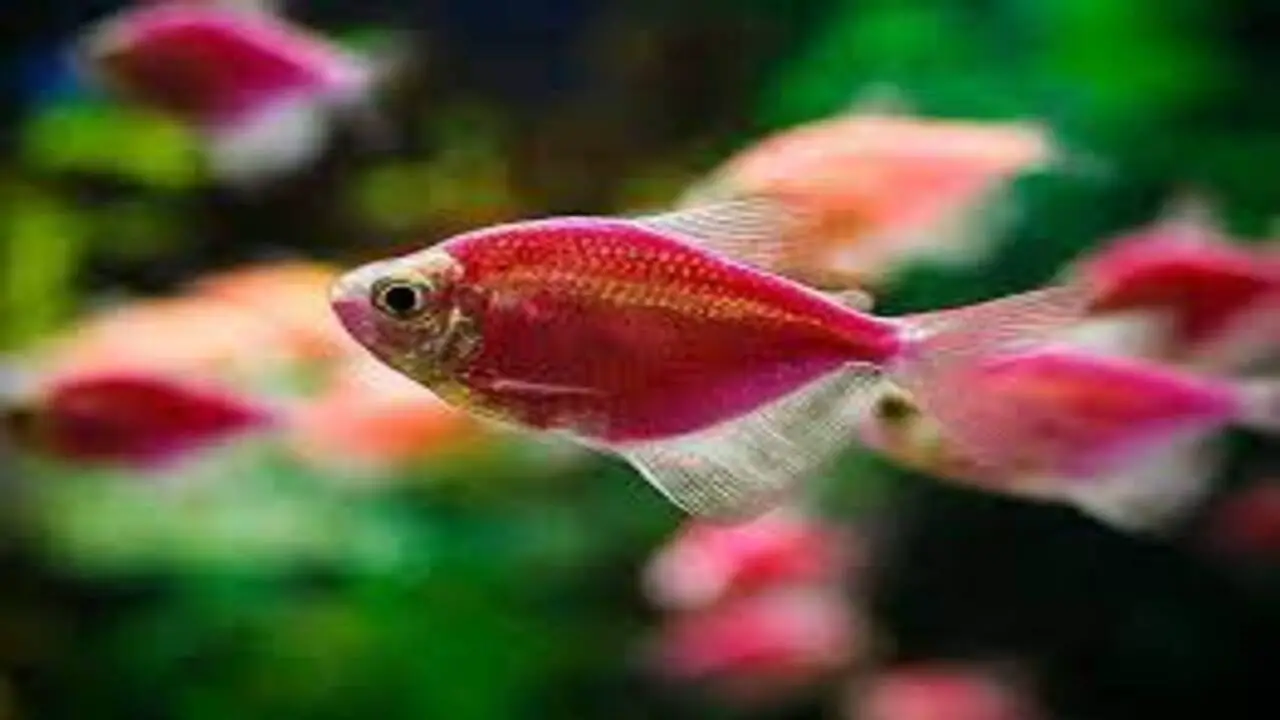
Male Glofish typically has a slimmer and more streamlined body shape, while females tend to be rounder and fuller. Males may have more vibrant colors, especially during the breeding season, while females may have a more subdued coloration.
Male Glofish may be more active and aggressive, while females tend to be more docile. Female Glofish can lay eggs, while males can fertilize them. Understanding the sex of your Glofish can help you provide appropriate care and maintain a healthy aquarium environment. Below, we discuss the difference between male vs female glofish.
Physical Differences
Regarding male and female Glofish, there are some distinct physical differences to look out for. Here are the key characteristics that can help you determine the gender of your Glofish. Keep in mind that these physical differences can vary depending on the specific species of Glofish.
If you’re unsure about the gender of your Glofish, it’s always best to consult with a knowledgeable aquarium expert or do further research specific to your fish species.
- Size: In general, male Glofish tend to be slightly smaller than females.
- Coloration: Males often exhibit brighter and more vibrant colors compared to females. They may have more intense hues of red, blue, or green.
- Body shape: Male Glofish typically has a slimmer and more streamlined body shape compared to females, who tend to be rounder and fuller in the abdomen area.
- Fin size and shape: The dorsal fin, or top fin, in males is usually larger and more elongated than that in females. Additionally, males may have more pronounced anal fins.
- Behavior: During mating season, males may display more aggressive behavior as they compete for the attention of females.
Behavioral Differences
When Glofish, there are some noticeable behavioral differences between males and females. Here are a few key points. While there may be some behavioral differences between male and female Glofish, each individual fish can still have its own unique personality.
- Males tend to be more active and assertive, often swimming around and exploring their environment.
- Females, on the other hand, are generally less active and more passive in their behavior.
- During the breeding season, males may become more territorial and aggressive towards other males.
- Females may display a more docile behavior during this time and may seek out hiding spots to protect their eggs.
- Males often display brighter colors and have longer fins than females, which can help attract mates.
Reproductive Differences
There are some noticeable reproductive differences between males and females. Here are some key points to consider. These reproductive differences play a significant role in the mating behaviors and overall appearance of male and female Glofish.
- Male Glofish typically have a more slender body shape compared to females.
- Males tend to be more vibrant and colorful, with brighter hues on their scales.
- Female Glofish usually have a rounder belly due to the presence of eggs.
- Males have a modified anal fin called a gonopodium, which is used for reproduction.
- Females may display a behavior known as “flashing,” where they rapidly swim near males to signal their readiness to mate.
- During breeding, males will chase and attempt to court females by flashing their vibrant colors and performing mating rituals.
Feeding Habits
Regarding feeding habits, there are some differences between male and female Glofish. Here are a few key points to consider. By understanding these differences in feeding habits between male and female Glofish, you can promote a healthy and harmonious environment for all your aquatic friends.
- Males tend to be more aggressive eaters than females, often competing for food.
- Females may have a slower feeding rate compared to males, taking their time to pick at the food carefully.
- Males may consume larger quantities of food in a shorter period of time, while females may have a more moderate eating pace.
Lifespan Differences
When it comes to the lifespan of male and female Glofish, there are a few key differences to keep in mind. By understanding these lifespan differences between male and female Glofish, you can better plan for their care and ensure they live long and healthy lives.
- Male Glofish tend to have a shorter lifespan compared to females. On average, male Glofish live for about 1-2 years.
- Female Glofish have a longer lifespan, typically living for around 2-4 years.
Differences In Appearance
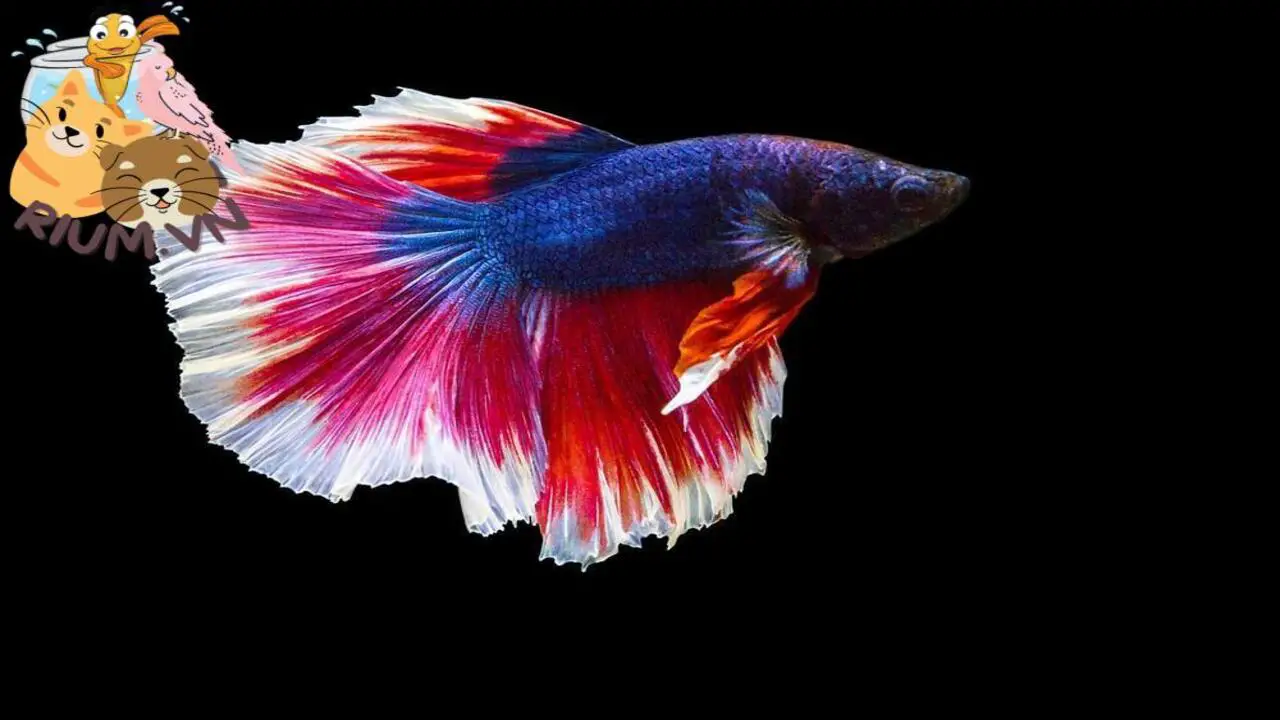
Regarding glofish, there are some noticeable differences in appearance between males and females. One of the most obvious differences is the coloration. Here we show some differences in appearance:
- Male Glofish tend to have more vibrant colors than females.
- Males often have longer and more flowing fins compared to females.
- Females may have a rounder body shape, while males may appear slimmer.
- In some species, males may develop a bump on their forehead during mating season.
- Males may exhibit more territorial behavior and aggression towards other males.
How To Identify Male And Female Glofish
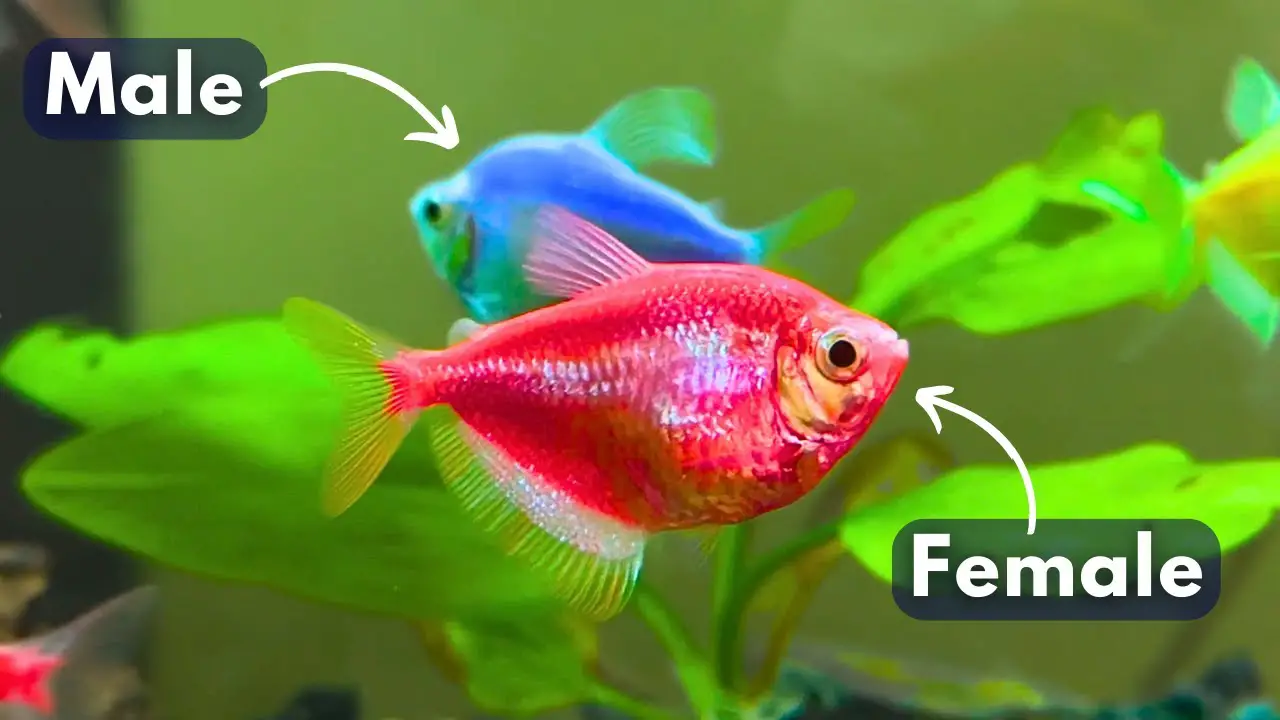
Identifying male and female Glofish can be challenging, but some physical characteristics can help you determine their gender. Here are some key points to consider. It’s important to note that these characteristics can vary depending on the species of Glofish you have. If you’re uncertain about the gender of your fish, consulting with a knowledgeable aquarium professional or doing further research specific to your species can provide more accurate identification.
- In general, male Glofish tend to be slightly smaller than females. Males typically reach a length of 1.5 to 2 inches, while females can grow up to 3 inches in length.
- Males often have longer and more pointed fins compared to females. Their dorsal fin, located on their back, is usually larger and more elongated.
- While both male and female Glofish can display vibrant colors, males may have more intense and vivid hues. Their colors are often brighter and more pronounced.
- During breeding season, males may exhibit more aggressive behavior as they compete for the attention of females. They might chase or flare their fins in an attempt to attract a mate.
The Importance Of Gender Identification In Glofish
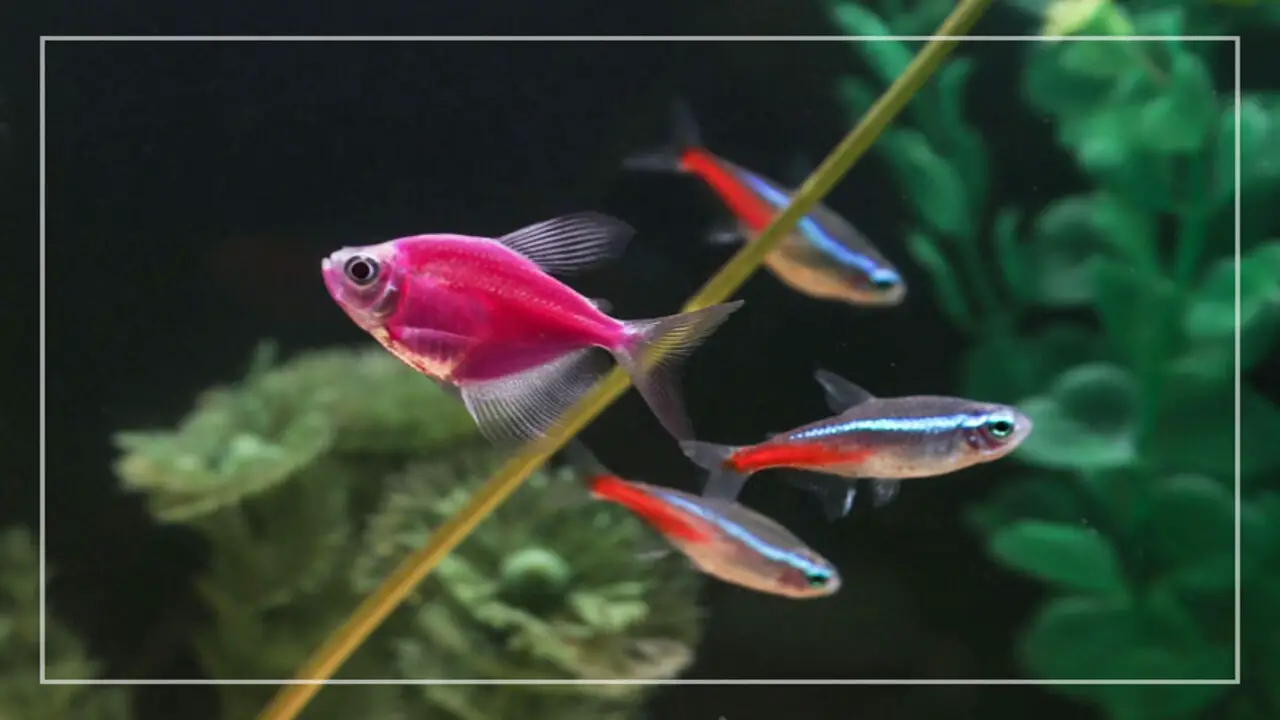
It is important to determine the gender of your Glofish, as it can help prevent unintended breeding and overcrowding in your aquarium. Generally speaking, male Glofish tend to have brighter colors and longer fins than their female counterparts. Females may appear slightly duller in color with shorter fins. Breeding Glofish requires careful attention to specialized conditions and care, making it best for experienced breeders.
Despite this, male and female Glofish make unique and interesting additions to aquariums. They are known for their vibrant colors and playful personalities, providing hours of entertainment for their owners. Whether you keep a single Glofish or an entire school, they will surely add vibrancy to your aquatic environment.
Caring Guide Between Male And Female Goldfish
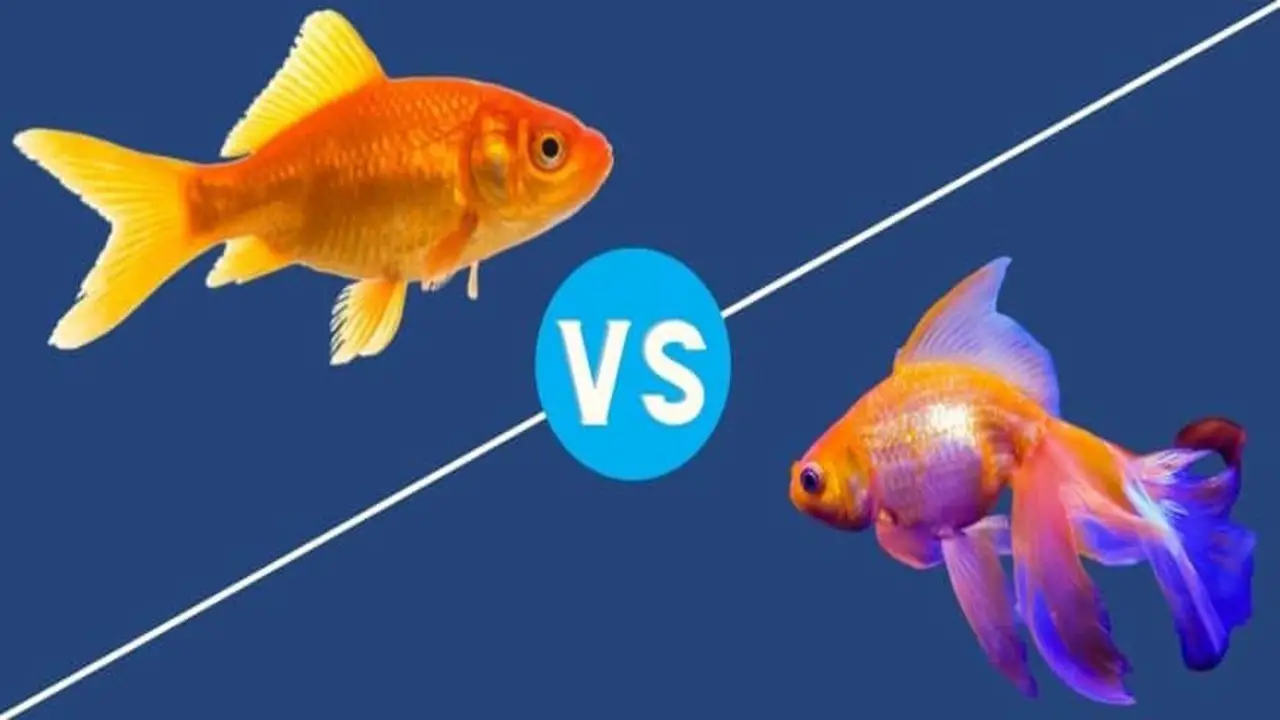
When caring for male and female goldfish, there are some key differences to keep in mind. Here are some important points to consider. Remember, each goldfish is unique, so it’s essential to observe their individual needs and adjust care accordingly. Regular water maintenance, a balanced diet, and a clean environment are crucial for the overall health and well-being of both male and female goldfish.
- Tank size: Male goldfish tend to be smaller in size compared to females so they can thrive in a slightly smaller tank. However, both males and females still require adequate space to swim and thrive.
- Social behavior: Male goldfish are generally more active and may exhibit more aggressive behavior, especially during breeding season. It’s important to provide plenty of hiding spots and separate tanks if necessary to avoid any potential harm.
- Reproduction: Female goldfish have a rounder and fuller body shape compared to males, especially when they are carrying eggs. If you’re not planning on breeding your goldfish, it’s recommended to keep males and females separate to prevent unintended spawning.
- Compatibility: In general, male and female goldfish can coexist peacefully as long as there is enough space and proper care is provided. However, it’s always a good idea to monitor their behavior closely and be prepared to make adjustments if any aggression or stress occurs.
Conclusion
Understanding the differences between male vs female Glofish is essential for their care and maintenance. It not only helps you provide the right environment for them but also allows you to identify any changes or health concerns. From behavior and physical characteristics to reproductive habits and feeding habits, various factors set male and female Glofish apart.
By observing these differences and knowing how to identify them, you can ensure the well-being and longevity of your Glofish. So, whether you’re a beginner or an experienced Glofish owner, take the time to learn about and appreciate the unique qualities of both male and female Glofish.
Frequently Asked Questions
Can The Gender Of Glofish Affect Their Lifespan?
The gender of Glofish does not directly impact their lifespan. However, males might have brighter colors and be more active than females. Proper care, maintaining water quality, and providing a balanced diet can greatly affect the lifespan of all Glofish.
How Many Babies Does A Glofish Have Typically?
Glofish typically has many babies, with female Glofish being able to produce up to 200 eggs at a time. These eggs take about two to four days to hatch. The baby Glofish is tiny and requires special care, including frequent small feedings.
How Long Does It Take For Glofish Eggs To Hatch?
Glofish eggs typically hatch within 3-7 days. Once hatched, the fry will attach to objects using a sticky substance. They can be fed infusoria or liquid fry food until they are big enough for regular fish food.
How Often Do Glofish Lay Eggs?
Glofish lays eggs every 2-3 weeks. Female Glofish can lay eggs without a male, but they won’t hatch without fertilization. Separating males and females is recommended if you don’t want them to reproduce. To breed Glofish, provide a spawning site like a breeding cone or marbles.
Can Glofish Be Kept Together?
Yes, male and female GloFish can coexist peacefully. However, if breeding is your intention, keeping them in separate tanks is advisable. GloFish thrives in schools, so having multiple fish of the same species together is best.

Aquarium passion is all about connecting with the aquatic life and providing education to the public on the importance of these creatures. We showcase a wide variety of marine life through our exhibits as well as working with schools to provide unique learning opportunities for students of all ages.




